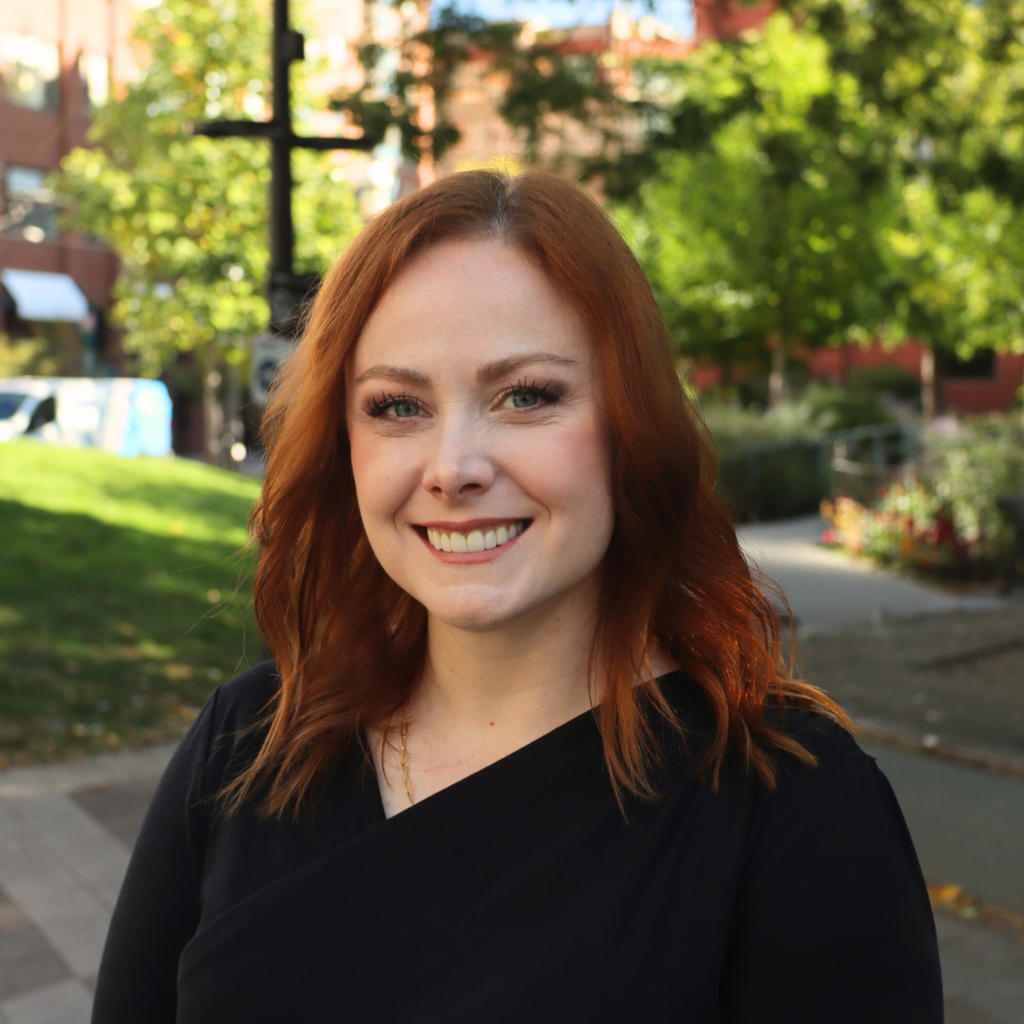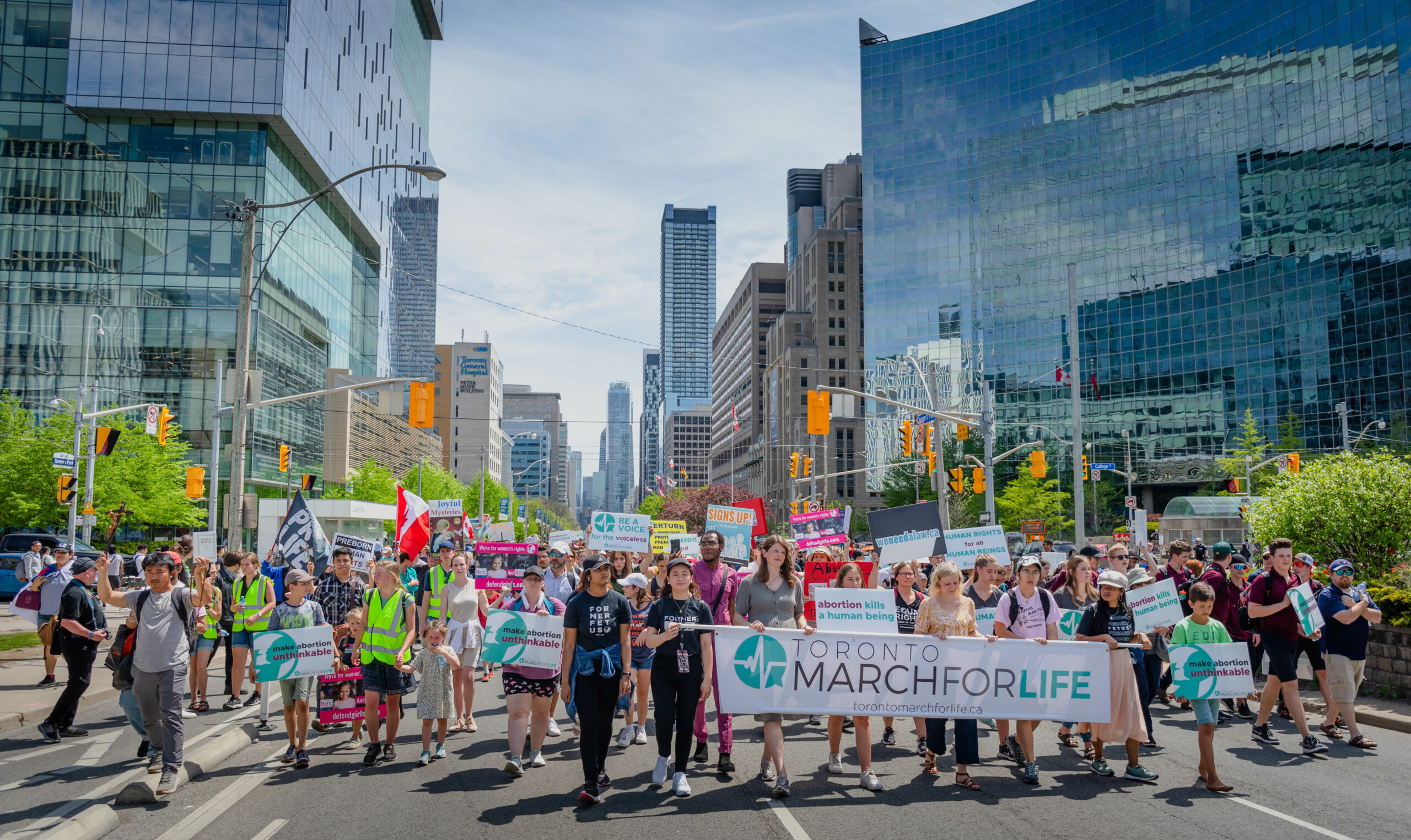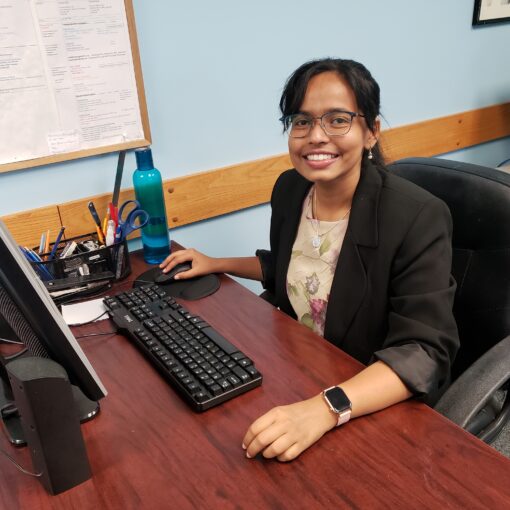When I was invited to give pro-life apologetics training for Choose Life Niagara’s pro-life youth conference in November last year and saw the venue, I jumped at the opportunity. The venue was the same as that of a summer camp my children have regularly attended. I couldn’t imagine a better way to spend the day than at a beautiful location loved by my family, teaching young people how to defend pre-born children’s lives and change hearts and minds on abortion. I felt so fortunate to have the chance to speak in a place that has been a source of joy and meaning for me and my family.
The day turned out to be providential in more ways than I anticipated.
I was the first speaker among many and opened the day by sharing the story of Agnes Mandl, a young Budapest woman in World War II who saved Jews from execution at the hands of the Nazis. In her community, the Nazis were brutally killing Jews on the banks of the Danube River by tying them in groups of three, shooting the middle victim, and throwing them into the dark, icy water to drown, pulled down by the weight of the dead victim. Mandl answered the call from community leaders to save these innocent people. She volunteered to swim into the waters of the Danube to draw them to shore after they had been thrown in. Despite the numbness and exhaustion from swimming in such cold conditions, she and her friends helped save the lives of nearly 50 people.
I spent the rest of the talk sharing with the 60 youth how we are facing a grave injustice, and are being called to take action, just like Agnes Mandl did. I showed them an animated depiction of what abortion does to pre-born children (you can watch a similar video to the one I presented here: Abortion Procedures: 1st, 2nd, and 3rd Trimesters) and emphasized that every single one of these procedures is legal in Canada, for any reason or no reason at all. We were there to teach how have effective conversations about abortion, so I shared with them the key dialogue strategies to address common pro-choice arguments. I emphasized that if we want to end abortion, we need to share the truth, and have intelligent, compassionate, and logical conversations to change minds on abortion and saves lives.
In my conclusion, I pointed out that, unlike Agnes Mandl, our job in saving lives takes much less effort and training. Mandl risked her life. Having a conversation about abortion carries nowhere near the same risk for ourselves. In a relatively short training session, they have everything they need to get started, and can start saving lives today.
After the training session, I wasn’t needed at the conference for a few hours as my next talk was the panel discussion late in the afternoon. I thought to myself: “What was I going to do with all this extra time?”
While checking my emails, I noticed some pro-life outreach happening nearby with our friends with Hamilton Against Abortion. It seemed providential because the outreach was only two kilometers away. So I joined in, and we conducted a two-hour “Choice” Chain.
I spoke to five people that afternoon. One was already pro-life, but the other four were not.
The first conversation was with a young man who believed abortion was wrong except in the case of sexual assault. I had him elaborate on why it would otherwise be wrong and then drew his attention to the image of the abortion victim in my hands. I asked him why it would be okay to do that to one of the innocent victims of the aggressor’s crime. He stared at the image, agreed it was not right, and after further discussion, he became fully pro-life.
The image was instrumental in convincing him that abortion is not without its own suffering.
The next person I spoke to was pro-choice out of a sense of compassion, thinking that abortion is a solution to preventing potential suffering in children who may be born into difficult circumstances. We spoke for quite some time, and I used most of the arguments I had just taught the students at the conference. Along with the image of the abortion victim, by the end of the conversation, the man agreed that killing innocent human beings is not a solution to suffering and that there are better solutions—he too became pro-life. The image was instrumental in convincing him that abortion is not without its own suffering.
The third person was pro-choice if the woman’s life was in danger. I was able to assure him, citing medical professionals, that abortion is never necessary to save a woman’s life. He was relieved and deeply saddened by the image of the abortion victim. By the end of the conversation, he was firmly against all abortions.
The last conversation was with a woman from India who is a dentist. This conversation was the most difficult. We spoke for a long time, and she shared the hypocrisy of valuing life in some ways and not others back in India. She said that Canada is much better. I used the image of abortion and effective dialogue tactics to show her that many Canadians are hypocrites too because of what they allow to be done to innocent pre-born children through abortion, all the while claiming to care about human rights, women, and children. She said I was right and hadn’t thought about it that way. After much effort, she ultimately agreed that abortion was never okay and went on her way, no longer supporting abortion.
I returned to the conference for the panel discussion, and one of the students asked me how people respond to the outreach I do on the street. I was overjoyed to share that, while they were doing other activities, I was out on the streets using the tools I had taught only hours earlier. I shared the testimonies of the four people whose minds had changed about abortion that afternoon, and assured them that the strategies we use are incredibly effective. The students were inspired, and some stayed to speak with me at the end of the evening to ask how they can get involved.
Events like this keep a pro-life activist motivated, because I can confidently say that what we teach works in practice. Providential and rewarding days like this are possible because our outreach works so well with our dialogue strategies, and because hundreds of pro-lifers in cities across the country (like Hamilton Against Abortion) are committed to ending abortion through regular effective outreach. I’m inspired to continue this work, because I can see what we do is growing and empowering the pro-life movement, and am certain it is bringing us closer to ending abortion.
If this post inspires you to get involved, reach out and let us know! We’d be happy to connect you with opportunities in your area.





